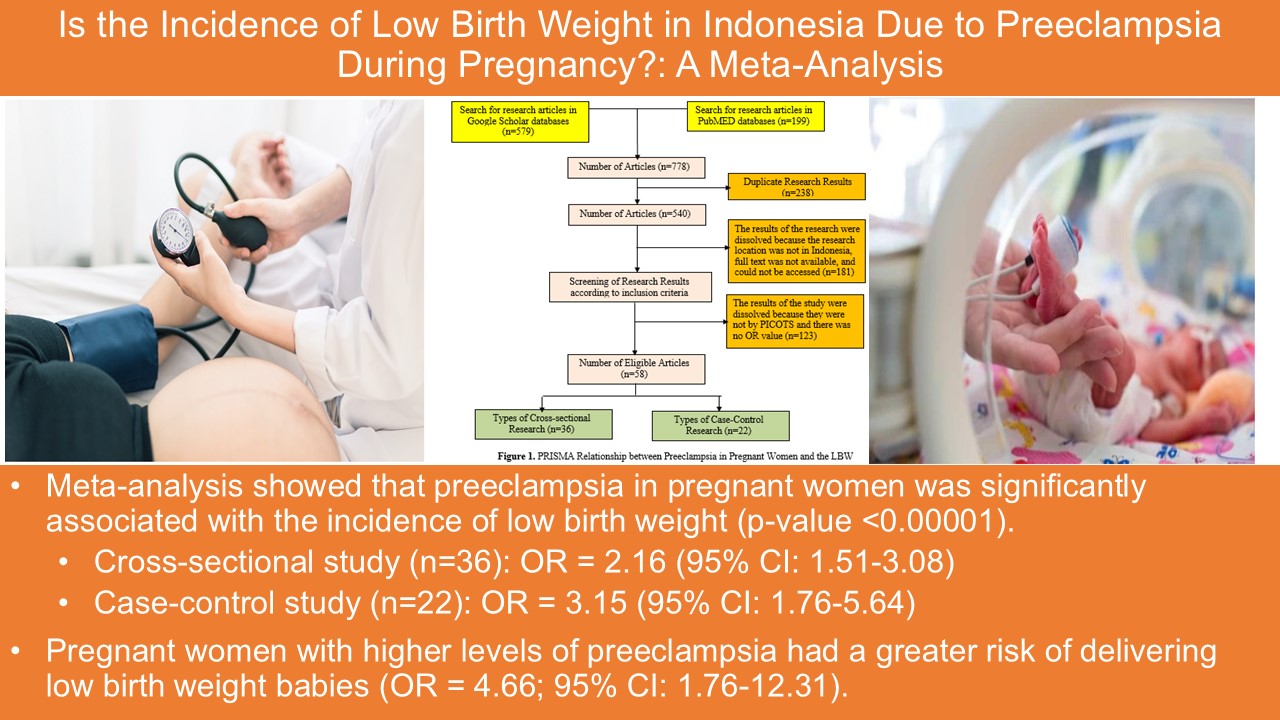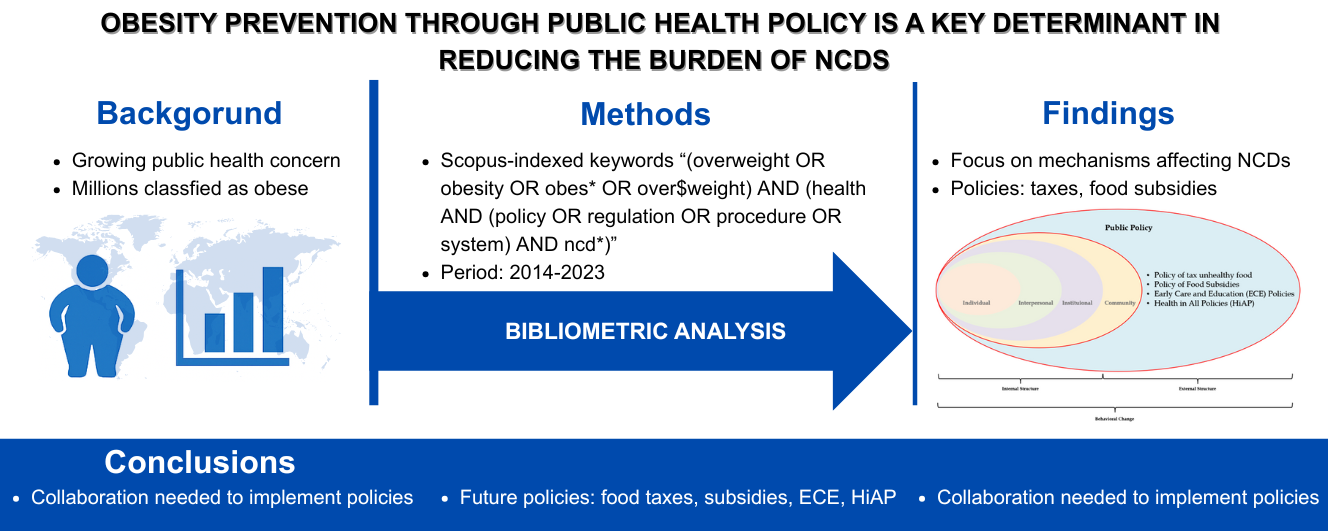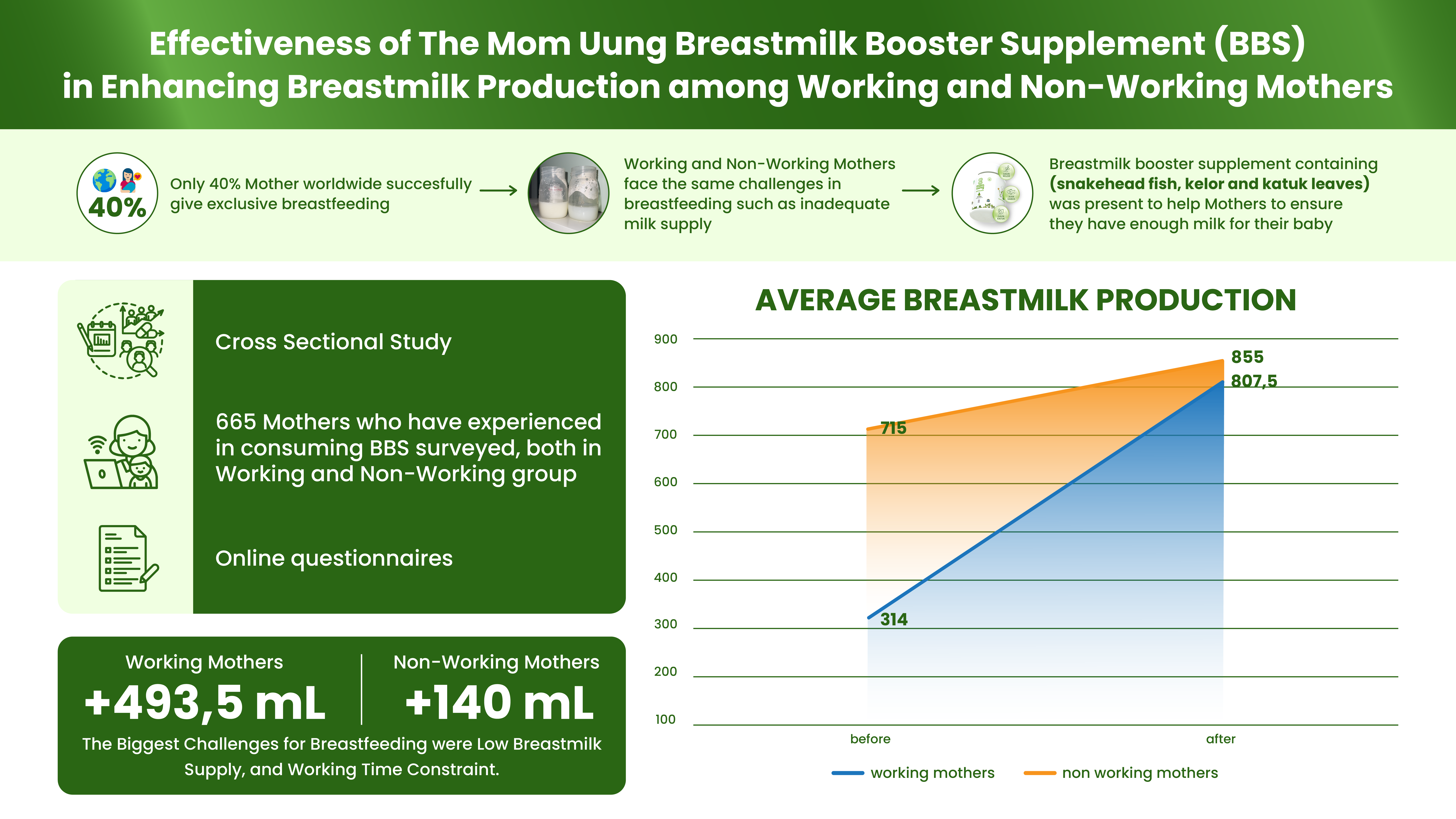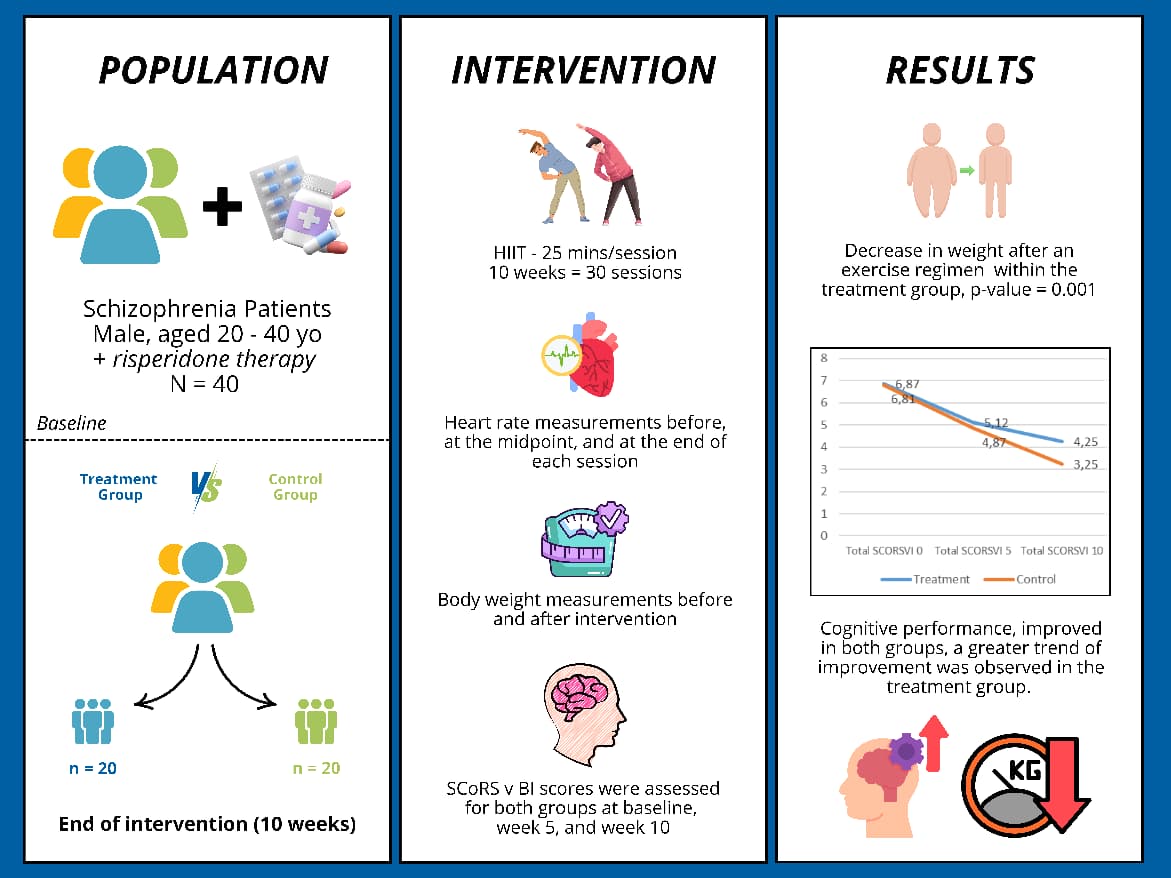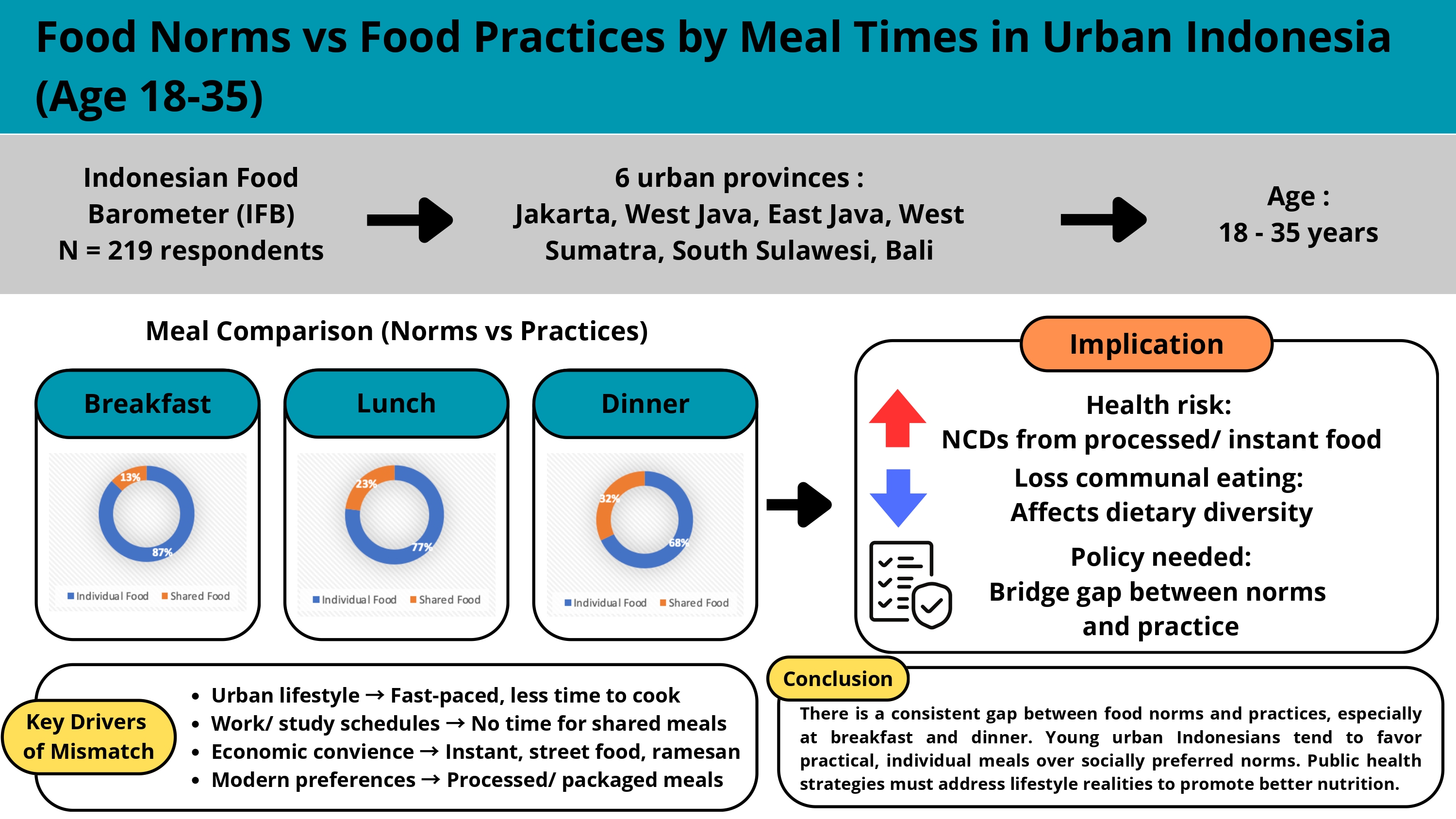EATING BEHAVIORS AMONG ADOLESCENT GIRLS: A SCOPING REVIEW
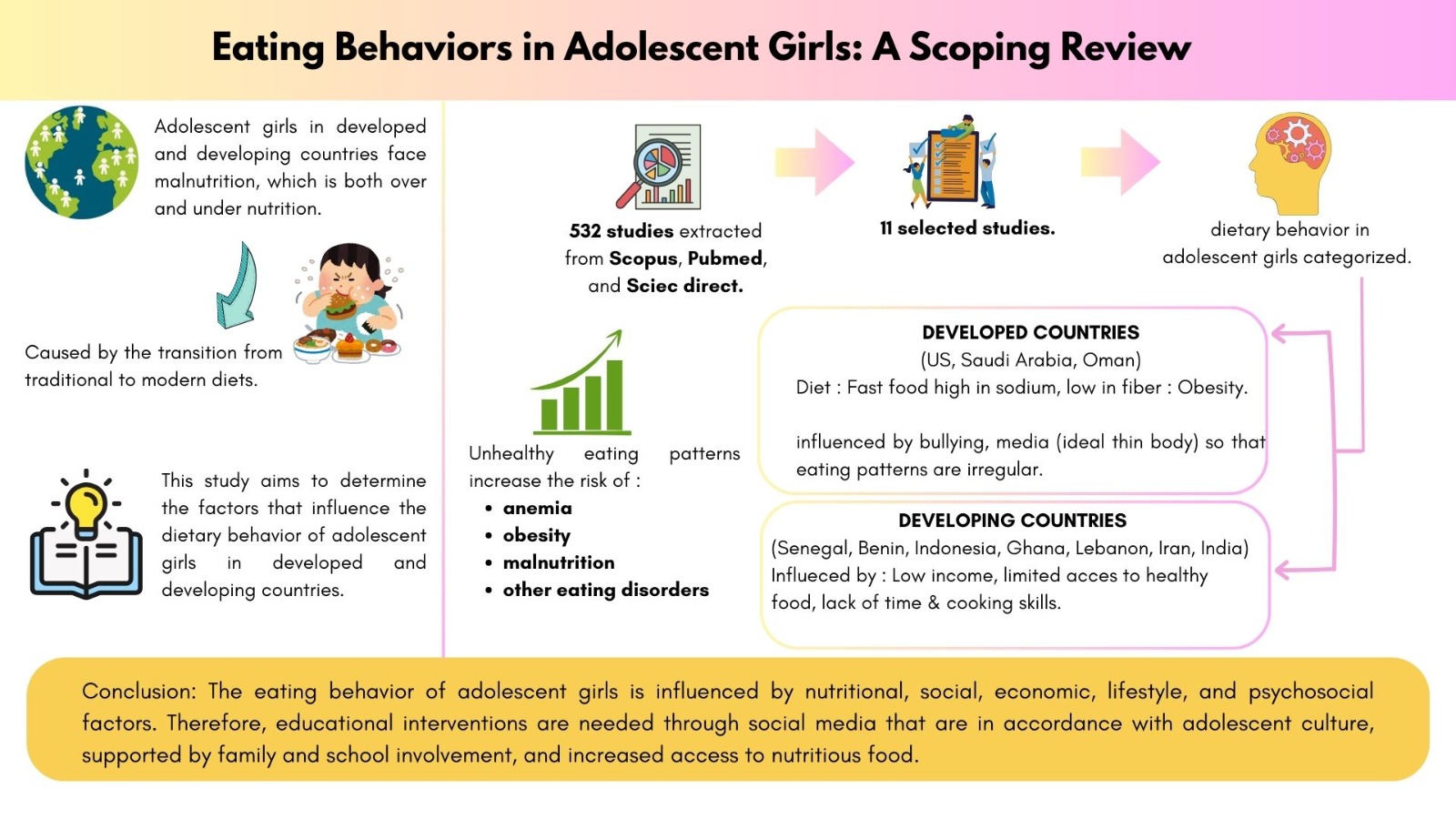
Downloads
Adolescent girls in developed and developing countries currently are prone to face malnutrition, both over- and under-nutrition. One of the causes is the shift from traditional to modern diets. This study aimed to determine the factors that influence the dietary behavior of adolescent girls in developed and developing countries. Scoping review performed following the PRISMA-ScR protocol with the Population, Exposure, and Outcome (PEO) approach. Described articles were published between 2014 and 2024, including abstracts and full texts from PubMed, Scopus, and Science Direct databases. The search used the keywords “eating habits*” OR “diet*” OR “dietary intake”, “adolescent girls*” OR “adolescent women*” OR “young women”. The results showed that diets of adolescent girls in both developed and developing countries correlated with malnutrition, characterized by high consumption of fast food that high in sodium and low in fiber. In developed countries, this resulted in obesity, while in developing countries it caused iron and calcium deficiencies. In developed countries, adolescent diets influenced by bullying and media pressure that idealizes thin bodies, thus triggered irregular eating patterns. Meanwhile, in developing countries, low family income, limited access to healthy food in school canteen, lack of time and cooking skills triggered low-nutrition diets. Parental support played an important role in increasing the consumption of healthy foods. Unhealthy diets increased the risk of anemia, obesity, malnutrition, and other eating disorders. Adolescent girls’ eating behavior influenced by nutritional, social, economic, lifestyle, and psychosocial factors.
Abraczinskas, Michelle, Brian Fisak Jr., and Rachel D. Barnes. 2012. "The Relation between Parental Influence, Body Image, and Eating Behaviors in a Nonclinical Female Sample." Body Image 9(1):93–100.
Akib, Alfishar, and Sri Sumarmi. 2017. “Eating Habits of Female Adolescents Related to Anemia: A Positive Deviance Study Food Consumption Habits of Female Adolescents Related to Anemia: A Positive Deviance Approach.” Amerta Nutr 23–33. doi: 10.2473/amnt.v1i2.2017.105-116.
Almutairi, Reem, Ahmad Azuhairi Ariffin, Aidalina Mahmud, and Anas S. Dablool. 2023. “Eating Disorders among Adolescent Female Students in Jeddah, Saudi Arabia.” Malaysian Journal of Medical Sciences 30(1):185–97. doi: 10.21315/mjms2023.30.1.16.
Anwar, Sanam, Asma Al-Hamed, and Noor Al-Zubaidi. 2018. Food Eating Habits of Adolescents in Oman .
Araújo, Joana, Joana Teixeira, A. Rita Gaio, Carla Lopes, and Elisabete Ramos. 2015. “Dietary Patterns among 13-y-Old Portuguese Adolescents.” Nutrition 31(1):148–54.
Bhatoolaul, Yogeshwaree, Abdulwahed Fahad Alrefaei, and Rajesh Jeewon. 2024. “Narrative Review on the Factors Affecting Fast Food Consumption among Adults.” Current Research in Nutrition and Food Science Journal 12(2):527–38. doi: 10.12944/crnfsj.12.2.4.
Braun, Virginia, and Victoria Clarke. 2006. “Using Thematic Analysis in Psychology.” Qualitative Research in Psychology 3(2):77–101.
Brown, Corbett, Sheila Shaibu, Segametsi Maruapula, Leapetswe Malete, and Charlene Compher. 2015. “Perceptions and Attitudes towards Food Choice in Adolescents in Gaborone, Botswana.” Appetite 95:29–35.
Choukas-Bradley, Sophia, Savannah R. Roberts, Anne J. Maheux, and Jacqueline Nesi. 2022. “The Perfect Storm: A Developmental–Sociocultural Framework for the Role of Social Media in Adolescent Girls' Body Image Concerns and Mental Health.” Clinical Child and Family Psychology Review 25(4):681–701. doi: 10.1007/s10567-022-00404-5.
Daeie-Farshbaf, Lida, Parvin Sarbakhsh, Mehrangiz Ebrahimi-Mameghani, and Ali Tarighat-Esfanjani. 2019. “Dietary Patterns and Socioeconomic Status in Iranian Adolescent Girls, 2015.” Progress in Nutrition 21:229–37. doi: 10.23751/pn.v21i2-S.6538.
Dahlgren, Camilla Lindvall, Christine Sundgot-Borgen, Ingela Lundin Kvalem, Anne Louise Wennersberg, and Line Wisting. 2024. “Further Evidence of the Association between Social Media Use, Eating Disorder Pathology and Appearance Ideals and Pressure: A Cross-Sectional Study in Norwegian Adolescents.” Journal of Eating Disorders 12(1). doi: 10.1186/s40337-024-00992-3.
Dunn, Catherine P., Joan B. Riley, Kirsten B. Hawkins, and Kenneth P. Tercyak. 2022. “Factors Associated With Disordered Eating Behavior Among Adolescent Girls: Screening and Education.” Journal of Primary Care and Community Health 13. doi: 10.1177/21501319211062673.
El-Ammari, Abdelghaffar, Hicham El Kazdouh, Siham Bouftini, Samira El Fakir, and Youness El Achhab. 2020. “Social-Ecological Influences on Unhealthy Dietary Behaviors among Moroccan Adolescents: A Mixed-Methods Study.” Public Health Nutrition 23(6):996–1008.
Garrusi, Behshid, and Mohammad Reza Baneshi. 2012. "Eating Disorders and Their Associated Risk Factors among Iranian Population–a Community Based Study." Global Journal of Health Science 5(1):193.
Gattario, Kristina Holmqvist, Magnus Lindwall, and Ann Frisen. 2020. “Life after Childhood Bullying: Body Image Development and Disordered Eating in Adulthood.” International Journal of Behavioral Development 44(3):246–55.
Giguère-Johnson, Madélie, Stéphanie Ward, Aminata Ndéné Ndiaye, Isabelle Galibois, and Sonia Blaney. 2021. “Dietary Intake and Food Behaviors of Senegalese Adolescent Girls.” BMC Nutrition 7(1). doi: 10.1186/s40795-021-00436-0.
Ha, Sung Kyu. 2014. “Dietary Salt Intake and Hypertension.” Electrolytes & Blood Pressure: E & BP 12(1):7.
Hoseini, Faeze Sadat, Abolghassem Djazayery, and Ariyo Movahed. 2023. "The Relationship between Food Cravings and Body Image with Healthy Eating Index in Adolescent Girls." Nutrition 111. doi: 10.1016/j.nut.2023.112037.
Hoteit, Maha, Razan Khadra, Zahraa Fadlallah, Youmna Mourad, Mohamad Chahine, Farouk Skaiki, Elham Al Manasfi, Abdulrahman Chahine, Omasyarifa Binti Jamal Poh, and Nikolaos Tzenios. 2024. “Prevalence and Time Trends of Low Serum B12 Levels and Inadequate B12 Dietary Intake in Lebanese Adults amidst the Food Insecurity Situation: Findings from a Nationally Representative Cross-Sectional Study.” Nutrients 16(2). doi: 10.3390/nu16020226.
Hulaila, Ahla, Zahroh Shaluhiyah, and Sri Winarni. 2024. "Need Assessments of Learning Model for Anemia Prevention Among Vocational High School Students." Health Promotion Journal: The Indonesian Journal of Health Promotion and Health Education 12:65–75. doi: 10.20473/jpk.V12.I1SP.2024-65-75.
Kumar, Sarvesh, and Neha Mishra. 2019. Nutritional Status and Dietary Pattern of Adolescent Girls: A Study From Urban Slums of Agra . Vol. 10.
Liguori, Julia, Rebecca Pradeilles, Amos Laar, Francis Zotor, Akua Tandoh, Gymnastics Klomegah, Hibbah A. Osei-Kwasi, Agnès Le Port, Nicolas Bricas, Richmond Aryeetey, Robert Akparibo, Paula Griffiths, and Michelle Holdsworth. 2022. “Individual-Level Drivers of Dietary Behavior in Adolescents and Women through the Reproductive Life Course in Urban Ghana: A Photovoice Study.” Maternal and Child Nutrition 18(4). doi: 10.1111/mcn.13412.
Mama Chabi, Sherifath, Nadia Fanou-Fogny, Eunice Nago Koukoubou, Benedicte Deforche, and Wendy Van Lippevelde. 2022a. “Factors Explaining Adolescent Girls' Eating Habits in Urban Benin: A Qualitative Study.” Adolescence 2(2):205–19. doi: 10.3390/adolescents2020017.
Mama Chabi, Sherifath, Nadia Fanou-Fogny, Eunice Nago Koukoubou, Benedicte Deforche, and Wendy Van Lippevelde. 2022b. “Factors Explaining Adolescent Girls' Eating Habits in Urban Benin: A Qualitative Study.” Adolescence 2(2):205–19. doi: 10.3390/adolescents2020017.
Maroun Khattar, et al. 2024. “Food Consumption Among Lebanese Adults: Findings From the Updated Lebanese National Food Consumption Survey (LEBANON-FCS).” MDI Nutrition .
Michael, Julianne E., Cynthia M. Bulik, Sarah J. Hart, Lauren Doyle, and Jehannine Austin. 2020. “Perceptions of Genetic Risk, Testing, and Counseling among Individuals with Eating Disorders.” International Journal of Eating Disorders 53(9):1496–1505.
Mohammadifard, Noushin, Nizal Sarrafzadegan, Fatemeh Nouri, Firoozeh Sajjadi, Hasan Alikhasi, Maryam Maghroun, Roya Kelishadi, Farhad Iraji, and MohammadReza Rahmati. 2012. “Using Factor Analysis to Identify Dietary Patterns in Iranian Adults: Isfahan Healthy Heart Program.” International Journal of Public Health 57:235–41.
Nago, Eunice S., Carl K. Lachat, Lieven Huybregts, Dominique Roberfroid, Romain A. Dossa, and Patrick W. Kolsteren. 2010. “Food, Energy and Macronutrient Contribution of Out-of-Home Foods in School-Going Adolescents in Cotonou, Benin.” British Journal of Nutrition 103(2):281–88. doi: 10.1017/S0007114509991668.
Neni. 2024. “The Relationship Between Knowledge and Behavior of Consuming Nutritious Foods and the Reproductive Health of Adolescent Girls in Sambongjaya Village.” Scientific Journal of Educational Sciences 7:1–4.
Norris, Shane A., Edward A. Frongillo, Maureen M. Black, Yanhui Dong, Caroline Fall, Michelle Lampl, Angela D. Liese, Mariam Naguib, Ann Prentice, Tamsen Rochat, Charles B. Stephensen, Chiwoneso B. Tinago, Kate A. Ward, Stephanie V Wrottesley, and George C. Patton. 2022. “Nutrition in Adolescent Growth and Development.” The Lancet 399(10320):172–84. doi: https://doi.org/10.1016/S0140-6736(21)01590-7.
Parker, Emily D., Rachel Widome, Jennifer A. Nettleton, and Mark A. Pereira. 2010. “Food Security and Metabolic Syndrome in US Adults and Adolescents: Findings From the National Health and Nutrition Examination Survey, 1999-2006.” Annals of Epidemiology 20(5):364–70. doi: 10.1016/j.annepidem.2010.02.009.
Putri, Nidya Ikha, Nur Indrawaty Lipoeto, Rauza Sukma Rita, and Arif Sabta Aji. 2019. “The Relationship Between Vitamin D Levels in Pregnant Women and Birth Weight in Tanah Datar Regency and Solok Regency.” Scientific Journal of Batanghari University, Jambi 19(1):61–64.
Seligman, Hilary K., Barbara A. Laraia, and Margot B. Kushel. 2010. “Food Insecurity Is Associated with Chronic Disease among Low-Income Nhanes Participants.” Journal of Nutrition 140(2):304–10. doi: 10.3945/jn.109.112573.
Thamrin, Halida, and Andi Masnilawati. 2021. “The Relationship Between Knowledge, Level of Protein, Iron, and Vitamin C Consumption with Hemoglobin Levels in Midwifery Students.” Suara Forikes Health Research Journal 12(1):30–33.
Tricco, Andrea C., Erin Lillie, Wasifa Zarin, Kelly K. O'Brien, Heather Colquhoun, Danielle Levac, David Moher, Micah DJ Peters, Tanya Horsley, Laura Weeks, Susanne Hempel, Elie A. Akl, Christine Chang, Jessie McGowan, Lesley Stewart, Lisa Hartling, Adrian Aldcroft, Michael G. Wilson, Chantelle Garritty, Simon Lewin, Christina M. Godfrey, Marilyn T. Macdonald, Etienne V Langlois, Karla Soares-Weiser, Jo Moriarty, Tammy Clifford, Özge Tunçalp, and Sharon E. Straus. 2018. “PRISMA Extension for Scoping Reviews (PRISMA-ScR): Checklist and Explanation.” Annals of Internal Medicine 169(7):467–73. doi: 10.7326/M18-0850.
WHO. 2019. “More Than One in Three Low- and Middle-Income Countries Face Both Extremes of Malnutrition.” Retrieved December 29, 2024 (https://www.who.int/news-room/detail/16-12-2019-more-than-one-in-three-low-and-middle-income-countries-face-both-extremes-of-malnutrition).
Winarni, Sri, Zahroh Shaluhiyah, Sulistyawati Sulistyawati, Naintina Lisnawati, Ahla Hulaila, and Nisrina Ocktalifa Chumair. 2024. “Knowledge, Attitudes, Eating Practices, and Iron (Fe) Consumption among Adolescent Girls (Aged 10-18 Years) in Central Java, Indonesia.” The Open Public Health Journal 17(1). doi: 10.2174/0118749445352293241105110603.
World Health Organization. 2024a. “Malnutrition.” WHO . Retrieved December 24, 2024 (https://www.who.int/news-room/fact-sheets/detail/malnutrition/).
World Health Organization. 2024b. “Obesity and Overweight.” WHO . Retrieved December 24, 2024 (https://www.who.int/news-room/fact-sheets/detail/obesity-and-overweight).

This work is licensed under a Creative Commons Attribution-NonCommercial-ShareAlike 4.0 International License.
- MEDIA GIZI INDONESIA Journal is the copyright owner of all materials published on this website.
- The formal legal provisions for access to digital articles of this electronic journal are subject to the terms of the Creative Commons Attribution-NonCommercial-ShareAlike license (CC BY-NC-SA 4.0), which means that MEDIA GIZI INDONESIA Journal and readers reserve the right to save, transmit media / format, manage in database, maintain, and publish articles as long as it continues to include the name of the Author.
- Printed and published print and electronic manuscripts are open access for educational, research and library purposes. In addition to these objectives, the editorial board shall not be liable for violations of copyright law.


2.png)















